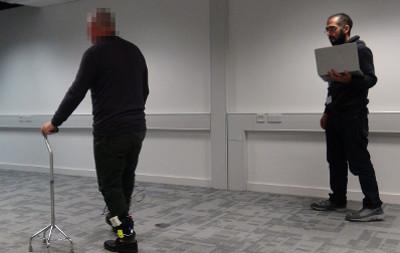OU haptic devices improve how stroke survivors walk

New research shows that wearable haptic devices, which stimulate movement, improve how stroke survivors walk.
In a paper, which has been published in JMIR Biomedical Engineering, research which was developed by Dr Theodoros Georgiou, Dr Simon Holland and Professor Janet van der Linden in the OU’s School of Computing and Communications, takes the Haptic Bracelets, which were first created at the OU, and trials them on 11 stroke survivors, out of which six showed immediate improvement in their walking pattern.
This, the largest study ever published on Haptic Bracelets work, gives systematic detailed evidence of the effectiveness of an innovative, simple, low-cost approach to gait rehabilitation for people after hemiparetic stroke.
Dr Holland, who leads the Haptic Bracelets research programme, said:
“Over 100,000 people will have a stroke this year, and around 1 million are living with a stroke. Walking poses significant problems for around half of stroke survivors, leading to reduced mobility, impaired fitness, limited independence, and increased risk of falling.
“The study also gives criteria for understanding which stroke survivors are most likely to benefit most from the approach. Low-cost mass-marketed wearable haptic devices for self-use based on this research would have the capacity to improve mobility for hundreds of thousands, increasing independence, building bone mineral density, reducing life-threatening fall injuries, and saving costs for health and social services.”
Read the paper: Rhythmic Haptic Cueing for Gait Rehabilitation of People With Hemiparesis: Quantitative Gait Study
Find out more about OU research in the School of Computing and Communications
Contact our news team
For all out of hours enquiries, please telephone +44 (0)7901 515891
Contact detailsNews & articles

Research image of the month – amplifying voices through visual research
This month’s research image of the month (August 2025) encapsulates Dr Sara Calvo Martinez’s research on how community social enterprises can create inclusive, healing, and empowering spaces for marginalised groups.